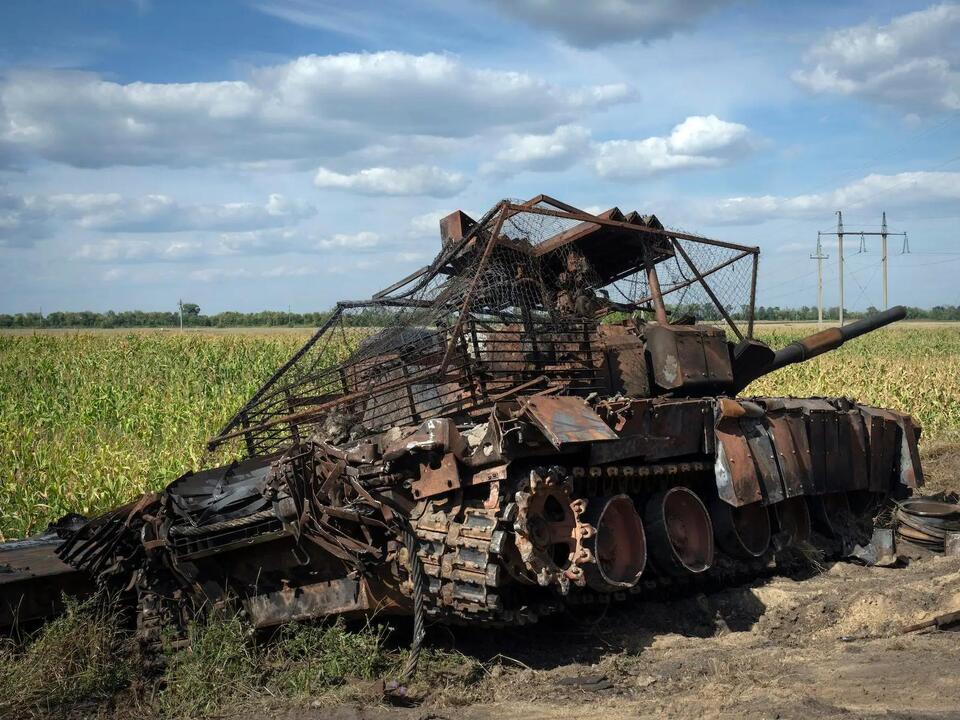Physical Address
304 North Cardinal St.
Dorchester Center, MA 02124
Physical Address
304 North Cardinal St.
Dorchester Center, MA 02124

In a notable development in the ongoing conflict, Ukraine has made significant strides into the Russian border region of Kursk, showcasing its ability to adapt and learn from previous encounters in eastern Ukraine. Military experts are analyzing this rapid movement as a strategic shift that may alter the dynamics of the war.
The Institute for the Study of War (ISW), a Washington, DC-based organization that monitors military activities, highlighted the substantial difference in territorial gains between Russia and Ukraine in a recent update. While Russian forces managed to occupy 1,175 square kilometers in Ukraine from January to July, reports indicate that Ukrainian forces advanced approximately 800 square kilometers in a mere six days, from August 6 to August 12.
This rapid territorial acquisition by Ukraine does not solely reflect the success of its operations; however, it does illustrate that a rapid maneuver can lead to quicker gains compared to the slower positional warfare strategy employed by Russia. According to ISW analysts, the ability of Ukrainian forces to execute such a maneuver has demonstrated how operational surprise combined with swift troop movements can yield significant results.
The offensive launched by Ukraine on August 6 caught Russian forces unprepared, effectively going against NATO’s predictions. The surprise attack exploited vulnerabilities in Russia’s complex military structure, allowing Ukrainian troops to make notable gains.
By August 11, reports indicated that Ukrainian forces had reclaimed as much territory as Russia had throughout the entire year. Mitch Belcher, a geospatial analyst at the ISW, pointed out the stark contrast in territorial acquisition during this period, drawing attention to Ukraine’s successful implementation of maneuver warfare.
The ISW emphasized that Ukraine’s tactics in the Kursk region illustrate how a combination of surprise and maneuver can achieve considerable territorial gains in shorter timeframes while requiring less manpower and resources than traditional warfare strategies.
On the other hand, Russia’s military actions in eastern Ukraine have seen limited success this year. The Russian forces have primarily engaged in labor-intensive operations that have been described as a war of attrition, sometimes referred to as “meat assaults.” This slow, costly approach has hindered effective advancements on the front lines.
As Ukraine continues its incursions, there is a potential for this shift to reshape the current 600-mile frontline situation. The ISW suggests that the effectiveness of the new strategies employed by Ukraine may force Russia to divert troops from its other positions to respond to the incursions in Kursk.
Reports have emerged that multiple groups of Russian soldiers, each with at least 1,000 troops, have already been redirected to the Kursk region, as detailed by unnamed senior US officials in correspondence with CNN. Furthermore, information from sources familiar with the situation indicated that Russia may have withdrawn around 5,000 troops from Ukraine to bolster defenses in Kursk. However, to successfully recapture this area, Russia would likely require more than 20,000 trained soldiers, suggesting a challenging road ahead for them.
The ISW has pointed out that this redeployment of Russian forces may negatively impact their capabilities on the main front lines, potentially undermining ongoing operations. Moreover, it remains uncertain how the diversion of Ukrainian resources for the Kursk offensive has affected their own operations on other fronts.
In conclusion, the developments in Kursk reveal strategic learning and adaptation by Ukrainian forces, emphasizing their growing capability to conduct effective maneuvers. The evolving situation may have significant implications for future military engagements and the overall landscape of the conflict in the region.
Source: Business Insider



